
cd_nom
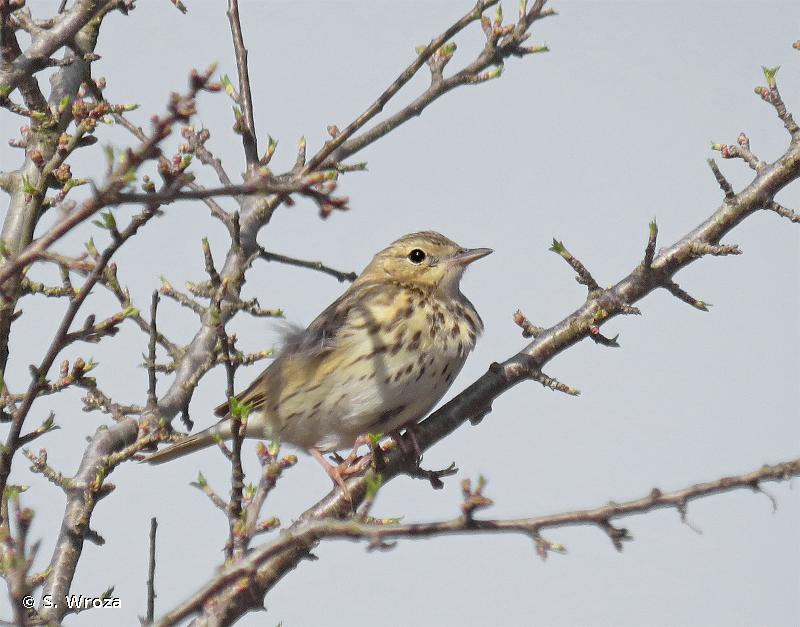
| Author : S. Wroza |
 |
Despite the Creative Commons license, please inform the author of the use which will be made of his photo
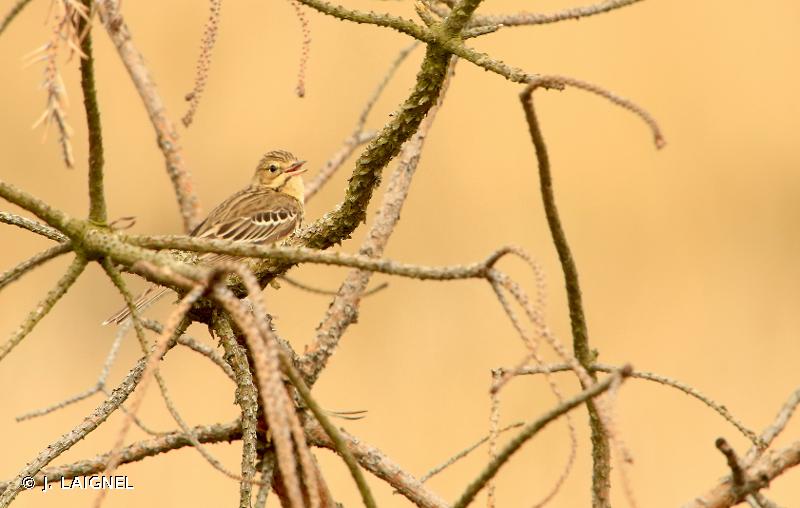
| Author : J. LAIGNEL |
 |
To get the picture, please visit:
Julien Laignel
Chargé de mission SNB - UMS2006-PATRINAT/MNHN
4, avenue du Petit Château
91800 BRUNOY
Tel.: 06.10.68.23.36
Mail: julien.laignel@9online.fr
Despite the Creative Commons license, please inform the author of the use which will be made of his photo
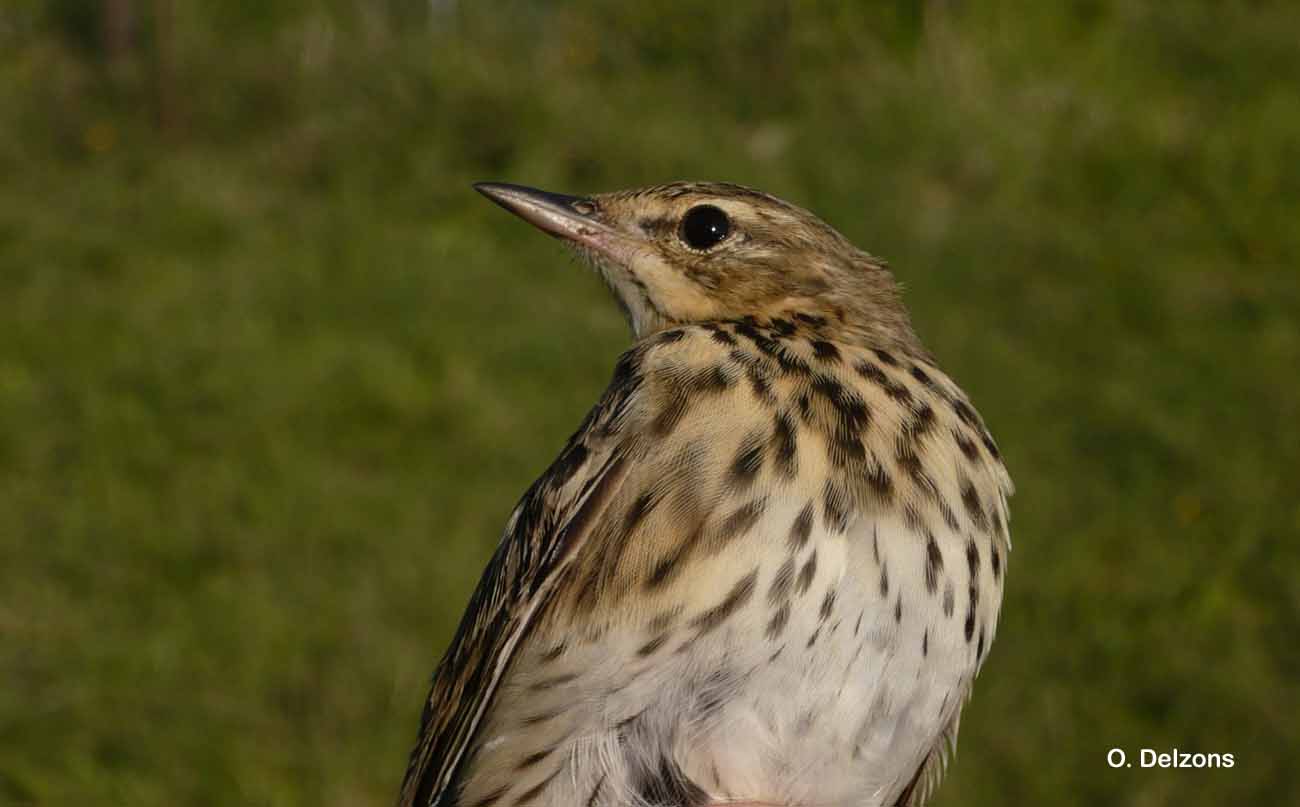
| Author : O. Delzons |
 |
To get the picture, please visit:
Olivier DELZONS
Muséum national d'Histoire naturelle - Service du Patrimoine Naturel
Chargé de mission Biodiversité - Convention Sita
4 avenue du petit château
91 800 BRUNOY
e-mail : delzons@mnhn.fr
Despite the Creative Commons license, please inform the author of the use which will be made of his photo
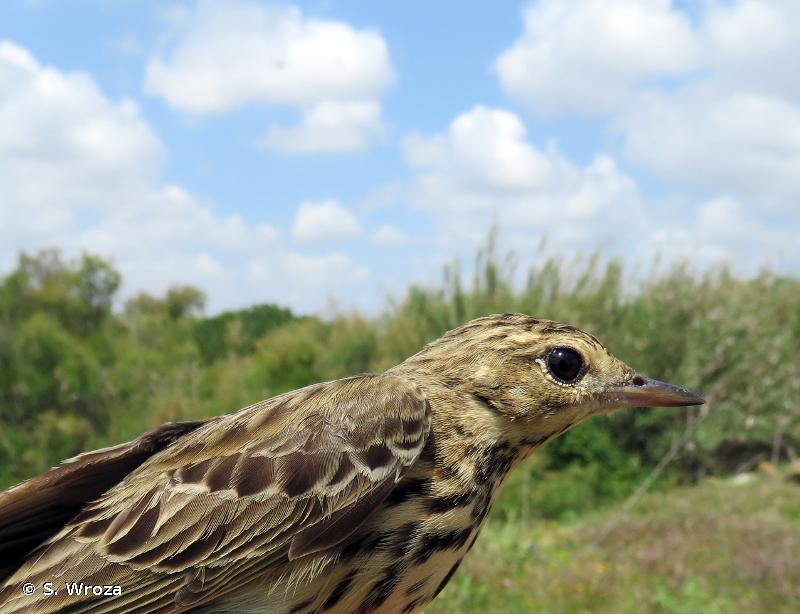
| Author : S. Wroza |
 |
Despite the Creative Commons license, please inform the author of the use which will be made of his photo
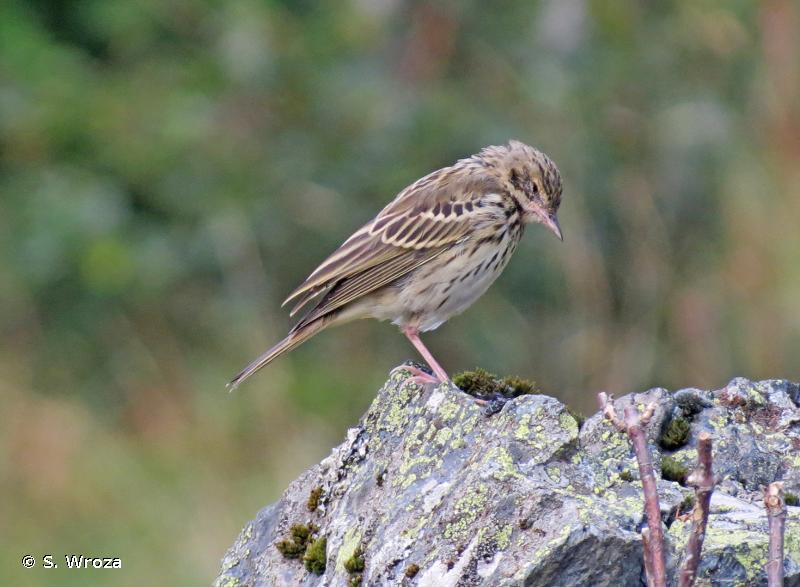
| Author : S. Wroza |
 |
Despite the Creative Commons license, please inform the author of the use which will be made of his photo
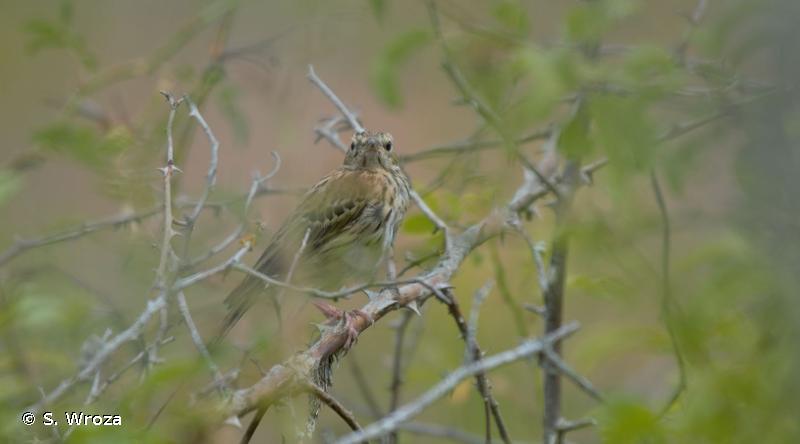
| Author : S. Wroza |
 |
Despite the Creative Commons license, please inform the author of the use which will be made of his photo
Taille/poids :
Longueur totale : 15 cm. Poids : 18 à 29 g.
Diagnose :
Le Pipit des arbres est le plus arboricole des pipits présents en France. Son plumage, de couleur assez terne, ne présente pas de signes très particuliers, sinon des rémiges externes blanches et bien visibles à l'envol. La coloration du dos est chamois fauve finement rayé. Le dessous est plus clair, d'un beige à chamois clair fortement rayé de marron foncé. Les pattes sont de couleur chair et l'ongle postérieur est court.
Détermination :
Moyennement difficile.
Espèces proches :
Il y a de réels risques de confusion du Pipit des arbres avec les autres pipits présents en France. Il ressemble surtout au Pipit farlouse Anthus pratensis de même taille, mais son corps est légèrement plus rond et son bec plus épais. Ses pattes sont plus roses et son plumage plus vif.
Période d'observation :
Avril à septembre-octobre.
Biologie-éthologie :
Le régime alimentaire du Pipit des arbres est constitué principalement d'insectes, mais il consomme également des éléments végétaux en migration et en hiver, notamment des baies et diverses graines.
Biogéographie et écologie :
L'aire de répartition du Pipit des arbres couvre l'essentiel de l'Europe, le nord de la Turquie et la Sibérie. Bien que nécessitant des arbres lui servant de perchoirs, le Pipit des arbres est plutôt un oiseau nicheur des milieux ouverts, à végétation herbacée abondante. Il est particulièrement courant en lisières de forêts, dans les clairières et les landes parsemées d'arbres isolés ou en bouquets. Il est aussi présent dans le bocage et dans les coupes forestières.
Compilé par J. Comolet-Tirman à partir des Cahiers d’habitats.(UMS 2006 Patrimoine Naturel (AFB / CNRS / MNHN)),2017
Continental
Metropolitan France
Overseas
Marine
Metropolitan France
Overseas
The map presents a summary at the 10 x 10 km grid of the observation data for the species transmitted to the SINP. These data have been subjected to validation filters.
The map presents a reference distribution layer of the species at the scale of departments and marine sectors. The presence and absence data were established by expertise within a network of partners. This reference distribution is used in the validation process of the SINP data at the INPN level.
Corresponds to a report on the basis of at least one observation proved within a period of 10 years (20 years for little-known invertebrates) preceding the year and no presumption of extinction since obtaining the last data nor doubt on reproductive and implemented nature of this population. For migratory species, the presence indicated concerns areas of reproduction.
This status is based on one or more of the following criteria:
This point covers the absence, more difficult by nature to demonstrate than presence. This status is based on one or more of the following criteria:
This status must be assigned to a department in which the presence of the species is casual.
Particular case of absence due to a proven extinction less than a half century ago (older disappearances are treated as "no probable or definite").
In the state of knowledge, we can not comment on the presence or absence in the current department. This is the default status when not comprised in one of the previous categories or whenever there is doubt.
The map shows the global distribution of the species based on GBIF data (Global Biodiversity Information Facility).
